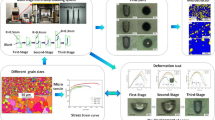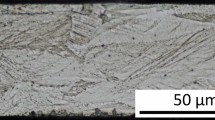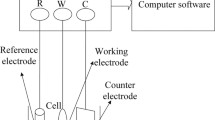Abstract
As-received pure titanium (Ti) foil with a thickness of 50 μm was annealed at 600 °C, 650 °C, and 700 °C for 30–60 min to obtain different grain sizes. Then the effects of grain size on the forming properties of pure Ti foil and the quality of formed cups made by micro deep drawing. Results indicate that the as-received pure Ti sample has poor formability and serious wrinkling occurs at the drawn cup mouth. Moreover, it has an obvious non-uniform cross-sectional profile and symmetry of the drawn cup wall. When the blank annealing temperature is 600 °C/60 min, the wrinkles can hardly be seen on the cup surface, and there are characteristics of uniform distribution and good symmetry in the cross-sectional profile of the micro drawn cup. However, when the annealing temperature increases from 600 to 650 °C/60 min, the number of wrinkles gradually increases, and the cross-sectional profile of the drawn cup deteriorates. Furthermore, a fracture occurs at the punch corner of the drawn cup formed by blank annealing at 700 °C/60 min. Besides, the scatter of the deformation pressure increases with greater grain sizes; this may be because the random orientation of individual grains leads to a scattering effect of the deformation pressure. The micro drawn part with larger grains has greater thickness reduction and uneven thickness distribution around the punch corner. Surface grains slide along the grain boundaries and rotate out of their original position, resulting in surface roughening and uneven thickness distribution during micro deep drawing.
















Similar content being viewed by others
References
Jiang ZY, Zhao JW, Xie HB (2017) Microforming Technology, Academic Press, Elsevier Inc., UK. Microforming Technology - 1st Edition. https://doi.org/10.1016/B978-0-12-811212-0.00035-2
Xu J, Wang XW, Wang CJ, Yuan L, Chen WJ, Bao JX, Su Q, Xu ZH, Wang CJ, Wang ZL, Shan DB, Guo B (2020) A review on micro/nanoforming to fabricate 3D metallic structures. Adv Mater 33:6. https://doi.org/10.1002/adma.202170044
Vollertsen F, Hu ZY (2010) Analysis of punch velocity dependent process window in micro deep drawing. Adv Proad Eng-Res Dev 4:553–559. https://doi.org/10.1007/s11740-010-0241-6
Aoki I, Sasada M, HiguchT YT (2002) Development of micro-piercing system with punch-damage monitoring function. J Mater Process Technol 125–126:497–502. https://doi.org/10.1016/S0924-0136(02)00328-X
Chan WL, Fu MW, Yang B (2011) Study of size effect in micro-extrusion process of pure copper Mater Design 32(7):3772–3782. https://doi.org/10.1016/j.matdes.2011.03.045
Hao L, Jiang ZY, Wei DB, Chen XW (2013) Finite element analysis of roll bit behaviors in cold foil rolling process. AIP Conf Proc 1532:478. https://doi.org/10.1063/1.4806864
Shan DB, Xu J, Wang CJ, Guo B (2009) Hybrid forging processes of micro-double gear using micro-forming technology. Int J Adv Manuf Technol 44:238–243. https://doi.org/10.1007/s00170-008-1829-2
Xu J, Shi L, Wang CX, Shan DB, Guo B (2015) Micro hot embossing of micro-array channels in ultrafine-grained pure aluminum using a silicon die. J Mater Process Technol 225:375–384. https://doi.org/10.1016/j.jmatprotec.2015.06.025
Fu MW, Wang JL (2021) Size effects in multi-scale materials processing and manufacturing. Int J Mach Tool Manuf 167:103755. https://doi.org/10.1016/j.ijmachtools.2021.103755
Luo L, Jiang ZY, Wei DB, Manabe KI, Sato H, He XF, Li PF (2015) An experimental and numerical study of micro deep drawing of SUS304 circular cups. Manuf Rev 2(27). https://doi.org/10.1051/MFREVIEW/2015029
Fu MW, Yang B, Chan WL (2013) Experimental and simulation studies of micro blanking and deep drawing compound process using copper sheet. J Mater Process Technol 213(1):101–110. https://doi.org/10.1016/j.jmatprotec.2012.08.007
Shimizu T, Murashige Y, Ito K, Manabe K (2009) Influence of surface topographical interaction between tool and material in micro-deep drawing. J Solid Mech Mater Eng 3(2):397–408. https://doi.org/10.1299/jmmp.3.397
Zhao JW, Wang T, Jia FH, Li Z, Zhou CL, Huang QX, Jiang ZY (2021) Experimental investigation on micro deep drawing of stainless steel foils with different microstructural characteristics. Chin J Mech Eng-En 34:40. https://doi.org/10.1186/s10033-021-00556-5
Manabe K, Shimizu T, Koyama H (2007) Evaluation of milli-scale cylindrical cup in two-stage deep drawing process. J Mater Process Technol 187–188:245–249. https://doi.org/10.1016/j.jmatprotec.2006.11.164
Gong F, Yang Z, Chen Q, Xie ZW, Shu DY, Yang JL (2015) Influences of lubrication conditions and blank holder force on micro deep drawing of C1100 micro conical-cylindrical cup. Precis Eng 42:224–230. https://doi.org/10.1016/j.precisioneng.2015.05.004
Wang CJ, Cheng LD, Liu Y, Zhang H, Wang Y, Shan DB, Guo B (2019) Research on micro-deep drawing process of concial part with ultra-thin copper foil using multi-layered DLC film-coated die. Int J Adv Manuf Tech 100:569–275. https://doi.org/10.1007/s00170-018-2757-4
Irthiea IK, Green G (2017) Evaluation of micro deep drawing technique using soft die-simulation and experiments. Int J Adv Manuf Tech 89:2363–2374. https://doi.org/10.1007/s00170-016-9167-2
Saotome Y, Yasuda K, Kaga H (2001) Microdeep drawability of very thin sheet steel. J Mater Process Technol 113:641–647. https://doi.org/10.1016/S0924-0136(01)00626-4
Geetha M, Singh AK, Asokamani R, Gogia AK (2009) Ti based biomaterials, the ultimate choice for orthopaedic implants-a review. Prog Mater Sci 54:397–425. https://doi.org/10.1016/j.pmatsci.2008.06.004
Wojtas D, Wierzbanowski K, Chulist R, Pachla W, Bieda-Niemiec M, Jarzebska A et al (2020) Microstructure-strength relationship of ultrafine-grained titanium manufactured byunconventional severe plastic defomation process. J Alloys Compd 837:155576. https://doi.org/10.1016/j.jallcom.2020.155576
Geiger M, Kleiner M, Eckstein R, Tiesler N, Engel U (2001) Microforming. CIRP Ann Manuf Technol 50:445–462. https://doi.org/10.1016/S0007-8506(07)62991-6
Meng B, Fu MW, Fu CM, Wang JL (2015) Multivariable analysis of micro shearing process customized for progressive forming of micro-parts. Int J Mech Sci 93:191–203. https://doi.org/10.1016/j.ijmecsci.2015.01.017
Chan WL, Fu MW (2012) Experimental and simulation based study on micro-scaled sheet metal deformation behavior in microembossing process. Mater Sci Eng A 556:60–67. https://doi.org/10.1016/j.msea.2012.06.058
Chan WL, Fu MW (2012) Studies of the interactive effect of specimen and grain sizeson the plastic deformation behavior in microforming. Int J Adv Manuf Tech 62:989–1000
Li WT, Fu MW, Wang JL, Meng B (2016) Grain size effect on multi-stage micro deep drawing of micro cup with domed bottom. Int J Precis Eng Manuf 17:765–773. https://doi.org/10.1007/s12541-016-0094-9
Geißdörfer S, Engel U, Geiger M (2006) FE-simulation of microforming processes applying a mesoscopic model. Int J Mach Tool Manuf 46(11):1222–1226. https://doi.org/10.1016/j.ijmachtools.2006.01.019
Shimizu T, Ogawa M, Yang M, Manabe KI (2014) Plastic anisotropy of ultra-thin rolled phosphor bronze foils and its thickness strain evolution in micro-deep drawing. Mater Design 56:604–612. https://doi.org/10.1016/j.matdes.2013.11.048
Simons G, Weippert C, Dual J, Villain J (2006) Size effects in tensile testing of thin cold rolled and annealed Cu foils. Mater Sci Eng A 416:290–299. https://doi.org/10.1016/j.msea.2005.10.060
Funding
This work was supported by The Shanxi Province Unveils Bidding Project (20201101020).
Author information
Authors and Affiliations
Contributions
Peisheng Han: investigation and writing original draft preparation. Guofeng Yuan, Xiaoyu Zhu, and YuLin Xing: investigation and data analysis. Xiaogang Wang: conceptualization, methodology, and validation.
Corresponding author
Ethics declarations
Ethics approval
Not applicable.
Consent to participate
Not applicable.
Consent for publication
All the authors declare their consent for the publication of the manuscript after acceptance.
Competing interests
The authors declare no competing interests.
Additional information
Publisher's Note
Springer Nature remains neutral with regard to jurisdictional claims in published maps and institutional affiliations.
Rights and permissions
Springer Nature or its licensor (e.g. a society or other partner) holds exclusive rights to this article under a publishing agreement with the author(s) or other rightsholder(s); author self-archiving of the accepted manuscript version of this article is solely governed by the terms of such publishing agreement and applicable law.
About this article
Cite this article
Han, P., Yuan, G., Zhu, X. et al. Grain size effect of pure Ti foils by micro blanking-deep-drawing compound process. Int J Adv Manuf Technol 123, 1799–1810 (2022). https://doi.org/10.1007/s00170-022-10279-z
Received:
Accepted:
Published:
Issue Date:
DOI: https://doi.org/10.1007/s00170-022-10279-z




